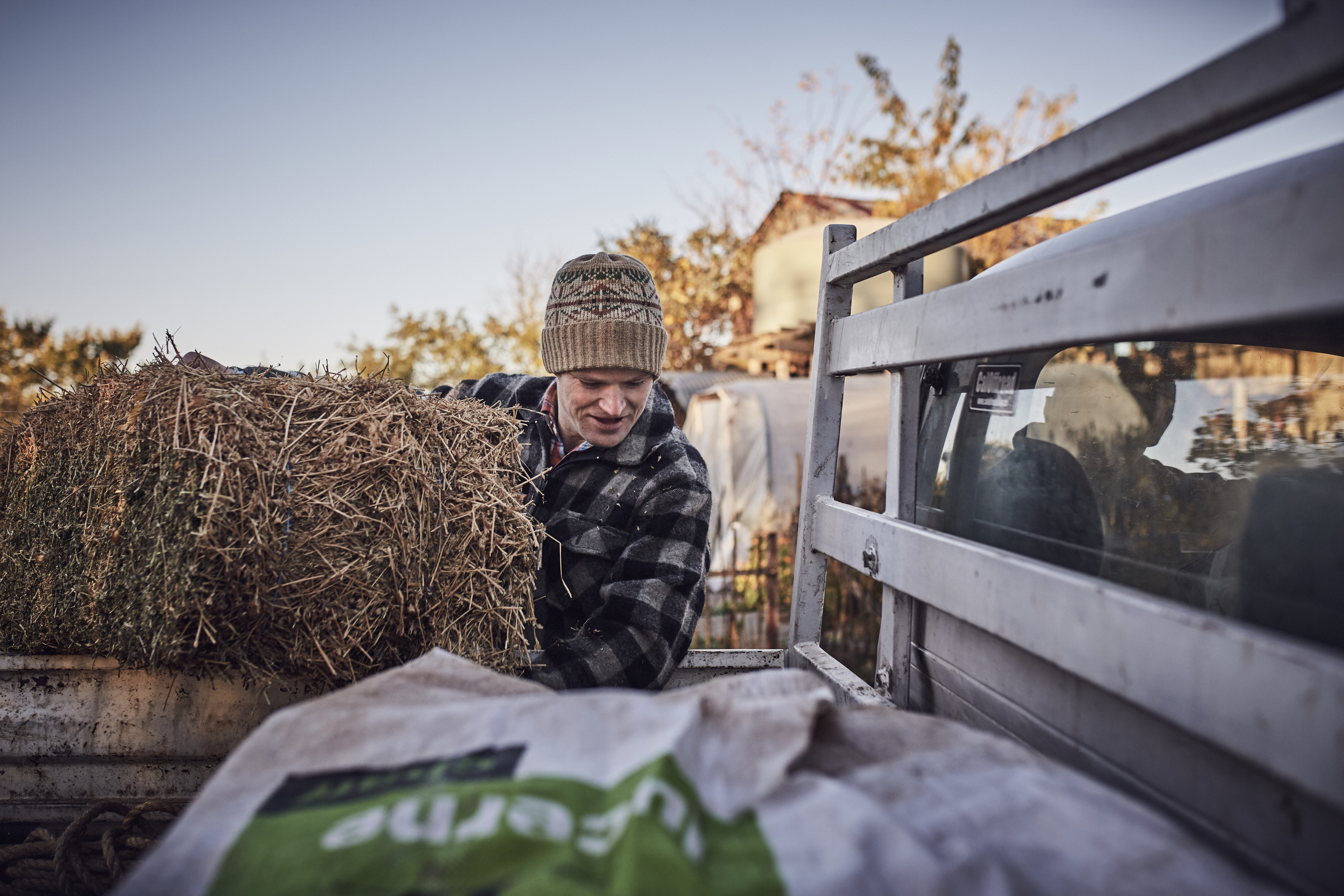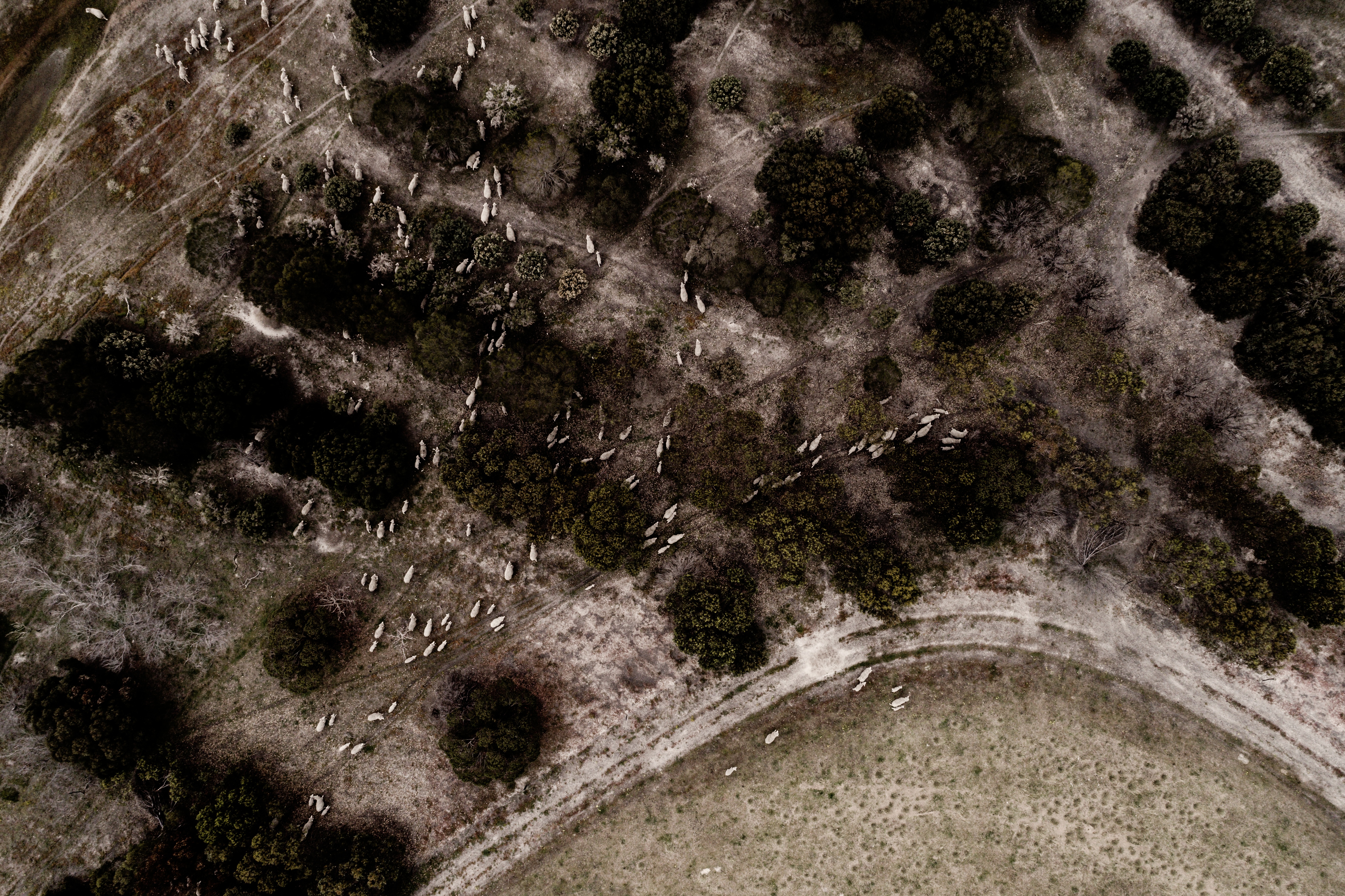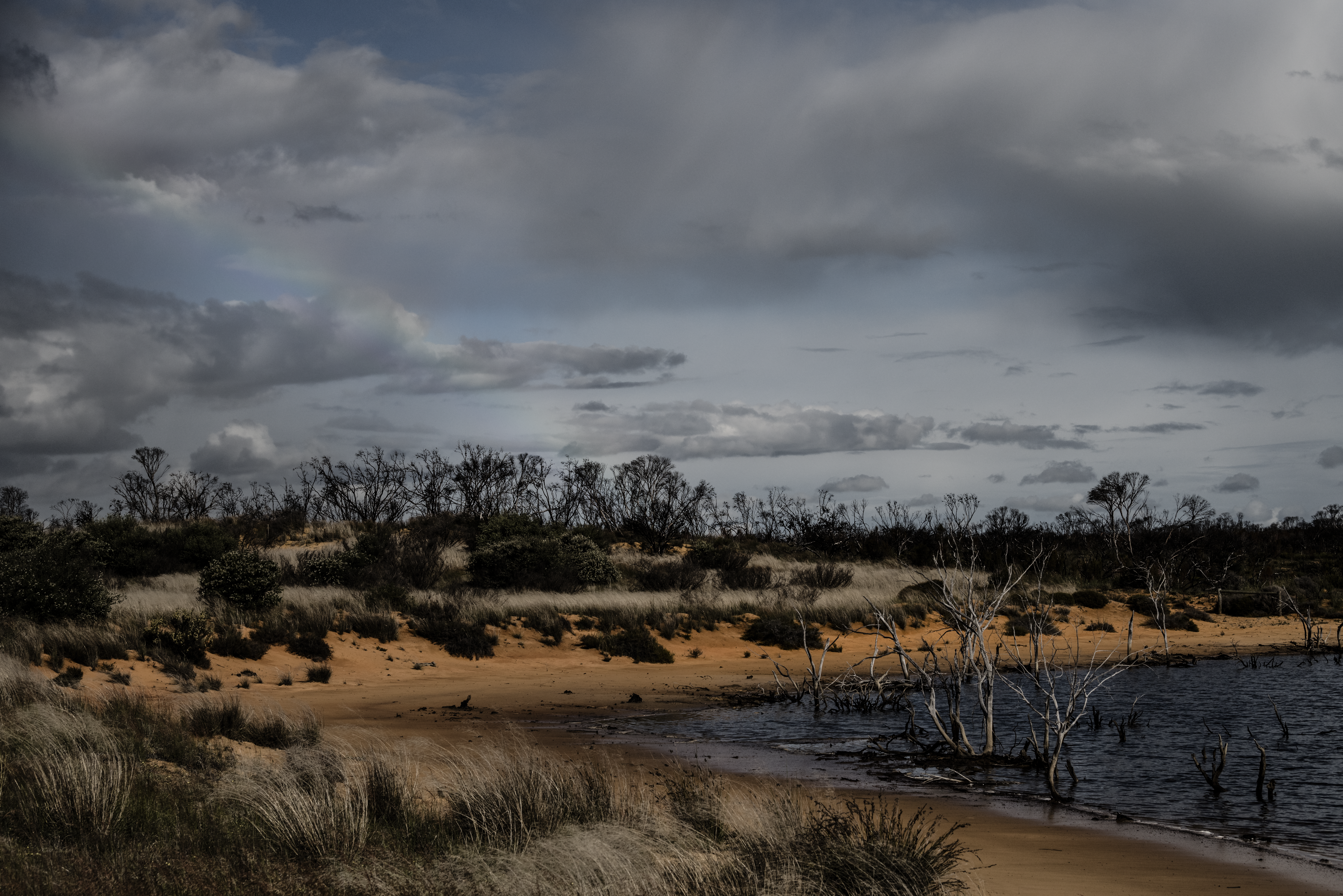Optimising management of grazing stubbles
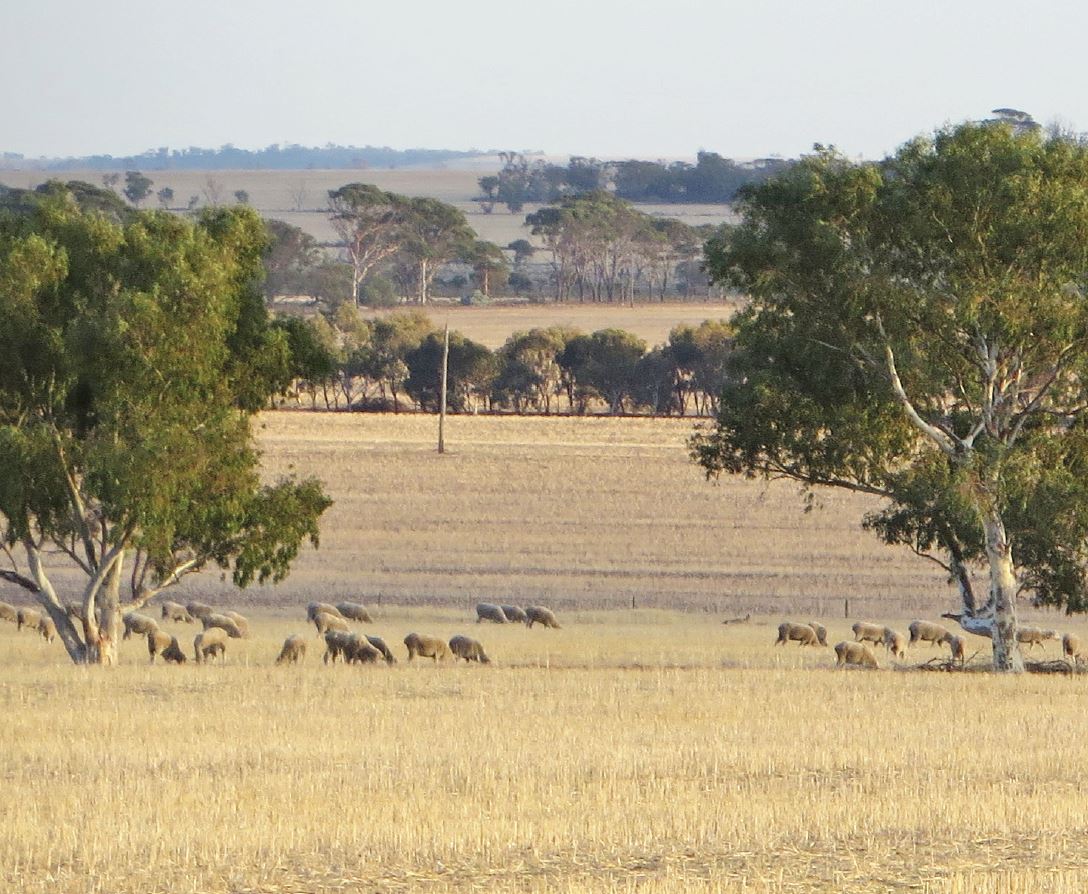
Crop stubbles can be a handy feed source over summer, but their quality declines quickly once the grain is eaten. Planning ahead is key to getting the best out of them. The new Grazing Modern Stubbles guide, developed by AWI, MLA and CSIRO, offers practical strategies on nutrition, prioritising stubbles for different classes of stock, the role of supplementary feeding and how to manage animal health risks. This article highlights the key takeaways to help you keep your flock in good condition this summer.
Crop stubbles provide a handy source of feed in mixed farming enterprises over summer. It’s important to establish a plan ahead of harvest for how you will best utilise your stubbles and manage the nutrition of your flock. The ‘Grazing modern stubbles’ guide was developed by AWI, MLA and CSIRO to help producers optimise the nutrition and management of sheep grazing stubbles in mixed-farming enterprises. You can access the guide here. The key concepts and strategies covered in this guide are summarised in this article.
Nutrition from stubble components
Sheep typically graze stubbles for 10-20% of the year in Western Australian mixed-farming enterprises. Stubble components include grain, leaf and stem, with their quality varying widely due to their chemical composition. For example, ripe stems are poorly digestible and subsequently have low nutritive value. Sheep tend to eat very little of the ripe stem and hence while these ripe stems make up a large component of stubbles, they represent very little of the diet of sheep grazing stubbles. Leaf and fine stem represent about half of the energy intake of sheep grazing stubbles. These components are more digestible and are therefore better, but still low quality compared to the ripe stems. The maintenance energy requirement of dry, adult sheep with mature weights of between 40kg and 60kg range from 7.6 and 9.7 MJ ME/hd/day when grazing. Unharvested grain provides sufficient energy to meet these maintenance requirements, whilst the non-grain components of common crop stubbles and chaff don't have enough energy to meet maintenance requirements. Hence, stubbles are initially a high-quality feed source but their quality rapidly depletes as the sheep eat the spilt grain. Improved efficiency of harvesting crops has also resulted in less grain being left behind in stubble paddocks. This is important to remember when grazing sheep on stubbles to ensure that they are maintained in good condition.
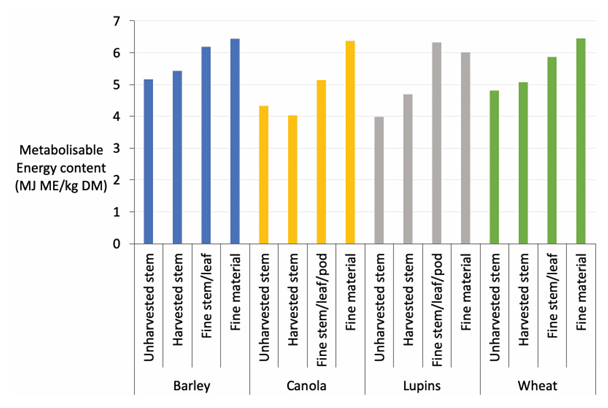
Prioritising stubbles
There is a wide variation in the amount of unharvested grain remaining in stubble paddocks and this has significant implications, given that about half of the feeding value of stubble comes from grain. Sheep grazing stubbles are highly selective and prioritise eating spilled grains and any green pick when these components are available. Decisions for prioritising stubbles for grazing depends on the class of livestock. Stubbles with the highest quality should be allocated to ewe lambs, followed by ewes that are being prepared for joining or are pregnant, with older or dry ewes grazing the lowest quality stubbles e.g., those that have already been grazed or canola and wheat stubbles.
Duration of grazing and supplementary feeding
The duration that crop stubbles are grazed varies widely depending on factors such as:
- Crop type
- Summer rain
- Growing season conditions (e.g., crop yields and frosts)
- Stocking rate
- Harvesting conditions (e.g., header grain losses)
- Weed burdens
- Paddock conditions
Supplementary feeding with high-energy and protein grains, such as lupins, can improve the utilisation of low-quality stubbles and extend the duration of grazing by reducing weight loss in sheep as stubbles lose nutritional value. Supplementary feeding with protein is particularly important for weaners, due to their higher protein requirements. The protein content of lupin and canola grains is high and hence low protein intake is less likely for sheep grazing lupin and canola stubbles.
The Stubble Grazing Calculator has been developed as a guide for producers to estimate the number of grazing days for adult sheep on wheat stubbles in the mixed farming regions of southern Australia, based on the level and timing of supplementary feeding required for a given scenario. You can download the Excel tool here. The calculator is not suitable for estimating the performance of weaners, due to their high requirement of protein for growth relative to adult sheep.
Chaff heaps or lines
Concentrating the foraging area by using chaff heaps or lines may help sheep to select higher-quality stubble components and reduce the rate of degradation of the higher-quality fine material. However, combining high- and low-quality stubble components, particularly in piles, may result in sheep eating less selectively. The nutritional value of larger stubble material may be improved by chopping chaff through the harvester, as sheep consume the finer material at a faster rate compared to the larger material.
Estimating feed value in stubble
Techniques to estimate the feed value of stubble include:
- Visual estimates
- Field residue cuts and grain counts
- DPIRD describe a simple method of estimating the amount of grain available in a stubble by counting the number of grains in 0.1m2 squares (about 30 x 30 cm). Follow a line across each paddock at right angles to the harvest runs and measure the number of grains in at least 20 squares of 0.1m2. You can then use the table below to estimate the amount of grain in the paddock, using the average number of grains you have counted per square. For example, if you measured an average of 24 lupin grains per square, this would equate to approximately 300 kg/ha of lupin grain in the paddock.
|
Grain |
Average number of grains per 0.1m2 square |
Approximate amount of grain in the paddock |
|
Wheat and oats |
28 |
100 kg/ha |
|
Barley |
25 |
100 kg/ha |
|
Lupins |
8 |
100 kg/ha |
|
Field peas |
5 |
100 kg/ha |
|
Chick peas |
5 |
100 kg/ha |
|
Faba beans |
2 |
100 kg/ha |
- Laboratory testing
- Monitoring the weight and condition score of a subsample of sheep
Sheep health
Other key considerations for sheep grazing stubbles include:
- Provide plenty of quality water – access to quality water is important as sheep are grazing dry feed. The water requirements of sheep are higher if you are providing mineral supplements containing salt or if the paddock contains saltbush
- Supplementation with vitamin E – vitamin E deficiency is a risk in late summer/autumn, after 2 to 3 months of grazing dry feed and grain. Growing lambs and weaners are most at risk, particularly those that have been born late because they will have limited body reserves from grazing green feed for less than 3 months
- Risk of acidosis when supplementary feeding sheep with grain – feeding sheep a high-starch diet without an adaptation period can cause rapid fermentation of the grain and overproduction of lactic acid by bacteria in the rumen, resulting in acidosis, slowing of the gut, dehydration and often death
- Risk of lupinosis when grazing lupin stubbles – lupinosis can be prevented through good management and monitoring when grazing lupin stems. Early and light grazing of lupin stubbles before summer rain will help reduce the risk of toxicity
- Risk of annual ryegrass toxicity (ARGT) – the incidence of ARGT when grazing stubbles is highly variable and depends on the amount of ryegrass in the crop, presence of biological agents (nematodes and bacteria) and seasonal growing conditions. It is recommended that chaff be tested for ARGT if it contains a significant amount of ryegrass seeds, particularly in areas with a history of ARGT
For more information, check out the following:
- Grazing modern stubbles guide - MLA, AWI and CSIRO
- Five tips for grazing sheep on stubbles - MLA
- Grazing stubbles and dry pasture - DPIRD
Amy Lockwood, AWI Extension WA





